General pharmacology
Anesthesia overview
In small animals, most anesthesia currently includes heavy sedation, intubation and then inhalant anesthesia. Occasionally (cat neuters) the procedure is short enough that animals are not intubated.
In large animals, the type of anesthesia varies more due to species sensitivity to drugs, issues under general anesthesia, and size of animals. Inhalant machines need to be much larger for horses and cattle. Additionally, many of these animals can be kept standing for procedures.
Large animal anesthesia
Anesthesia is considered to have three main parts: sedation, induction and maintenance.
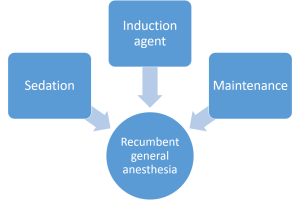
Sedatives are often alpha-2 adrenergic agents such as xylazine. Induction agents are typically agents that will cause recumbency; the most common category are dissociative agents such as ketamine. Maintenance is whatever is used to keep the needed plane of anesthesia going.
The process can “stop” before general anesthesia is present. For many large animal procedures, sedation is sufficient as long as local anesthesia is provided. Horses and cattle can remain standing for the procedure.
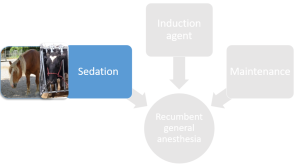
Other agents can be added to enhance the sedation by providing analgesia and additional calming. Narcotics and/or nonsteroidal agents provide pain relief and potentiate sedation. Adding a calming agent such as acepromazine also leads to longer duration sedation.
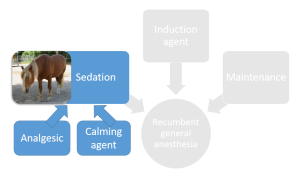
If the animal needs to be recumbent, then an induction agent is added. In large animals, this is typically ketamine or a similar drug.
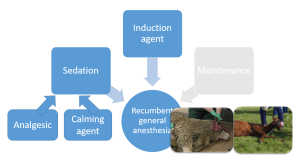
If the procedure is short enough, then maintenance agents are not required. Analgesics (narcotics, NSAIDs) are still useful and additional calming agents may be used. For general anesthesia, acepromazine may still be used but shorter duration benzodiazepines are more common.
If the procedure will be more than 10-15 minutes, a method of maintaining the anesthetic plan is needed. This may be repeated doses of the sedative and induction agents, an infusion, or inhalant anesthesia.
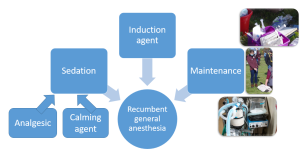
Exceptions
Cattle can be “stunned” standing using ketamine. This is not possible in horses.
Sheep and neonatal animals should not receive alpha 2 agonists; they often get a calming agent + dissociative agent. This protocol can also be useful in sick and geriatric animals.

